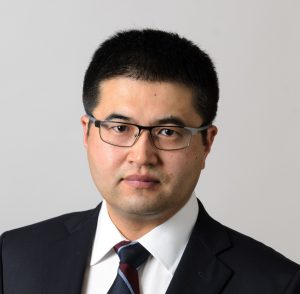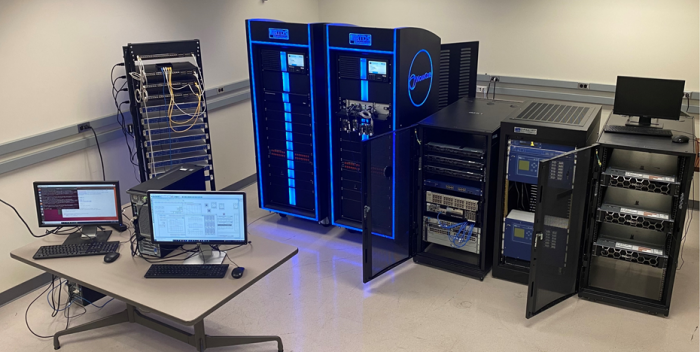By Daniel Dunaief
The Department of Energy is energized by the possibility of developing and enhancing microgrids.
What are microgrids? They are autonomous local power systems that have small, independent and often decentralized energy sources. Often, they use renewable energy, like wind or solar power, although some use natural gas or diesel.
The DOE’s dedication to developing these microgrids may cut costs, create efficiencies and enhance energy reliability.

Peng Zhang, SUNY Empire Innovation Professor in the Department of Electrical and Computer Engineering at Stony Brook University, is leading a diverse team of researchers and industry experts who received $5 million of a $50 million investment the DOE recently made to developing, enhancing and improving microgrid technology.
Bringing together these energy experts, Zhang hopes to use artificial intelligence to create a usable, reliable and efficient source of energy, particularly during periods of power outages or disruption to the main source of energy.
“The traditional microgrid operation is based on models and human operators,” Zhang said. “We developed this data-driven or AI-based approach.”
Artificial intelligence can enhance the safety and reliability of microgrids that can receive and transmit power.
One of the objectives of the systems Zhang and his collaborators are developing will include protecting the power supplies against faults, accidents from natural disasters and cyberattacks.
“This project led by Professor Zhang is a great example demonstrating the impact of this novel research on essential infrastructure that we rely on daily,” Richard Reeder, Vice President for Research at Stony Brook University, said in a statement.
Zhang said he has verified the methods for this AI-driven approach in the lab and in a simulation environment.
“Now, it’s time to demonstrate that in more realistic, microgrid settings,” he said. He is working with microgrid representatives in Connecticut, Illinois and New York City. His team will soon work with a few representative microgrids to establish a more realistic testing environment.
The urgency to demonstrate the feasibility of this approach is high. “We need to kick the project off immediately,” said Zhang, whose team is recruiting students, postdocs, administrative staff and technicians to meet a two-year timeline.
The group hopes AI-grids can be used in different microgrids around the country. If the platform is generic enough, it can have wide applications without requiring significant modifications.
While operators of a microgrid might be able to know the ongoing status, they normally are not able to respond to contingencies manually. “It’s impossible for the operator to know the ongoing status” of power sources and power use that can change readily, Zhang explained. “That’s why we had to rely on a data driven approach.”
Additionally, end users of electricity don’t necessarily want their neighbors to know about their power needs. They may not want others who are using the same microgrid system to know what appliances or hardware are in their homes.
Instead, the system will rely on the data collected within each microgrid, which reflects the behavior at different intervals. Those energy needs can change, as people turn on a TV or unplug a wind turbine.
At the same time, the power system load and generation need to remain in balance. Microgrids that produce more energy than the system or end users need can send them to a utility grid or to neighboring microds or communities. If they don’t send that energy to others who might use it, they can lose some of that energy.
Power needs to be balanced between supply and demand. Storage systems can buffer an energy imbalance, although the cost of such storage is still high. Researchers in other departments at Stony Brook and Brookhaven National Laboratory are pursuing ways to improve efficiencies and reduce energy storage costs.
Balancing energy is challenging in most microgrids, which rely on intermittent and uncertain renewable energy sources such as sunlight. In this project, Zhang plans to connect several microgrids together into a “mega microgrid system,” that can allow any system with a surplus to push extra energy into one with a deficiency.
Microgrids aren’t currently designed to replace utilities. They may reduce electricity bills during normal operations and can become more useful during emergencies when supplies from utilities are lower.
While artificial intelligence actively runs the system, people are still involved in these programmable microgrids and can override any recommendations.
In addition to having an alarm in the event that a system is unsafe or unstable, the systems have controllers in place who can restore the system to safer functioning. The programming is flexible enough to change to meet any utility needs that differ from the original code.
In terms of cybersecurity, the system will have three lines of defense to protect against hacking.
By scanning, the system can localize an attack and mitigate it. Even if a hacker disabled one controller, the control function would pop up in a different place to replace it, which would increase the cost for the attacker.
Stony Brook created a crypto control system. “If an attacker got into our system, all the information would be useless, because he would not understand what this signal is about,” Zhang said.
While he plans to publish research from his efforts, Zhang said he and others would be careful in what they released to avoid providing hackers with information they could use to corrupt the system.
For Zhang, one of the appeals of coming to Stony Brook, where he arrived two years ago and was promoted last month to Professor from Associate Professor, was that the university has one of the best and best-funded microgrid programs in the country.
Zhang feels like he’s settled into the Stony Brook community, benefiting from interacting with his neighbors at home and with a wide range of colleagues at work. He appreciates how top scholars at the Massachusetts Institute of Technology, Harvard and national labs have proactively approached Stony Brook to establish collaborations.
Zhang is currently discussing a Phase II collaboration on a microgrid project with the Navy, which has funded his research since his arrival. “Given the federal support [from the Navy], I was able to recruit top people in the lab,” he said, including students from Columbia and Tsinghua University.





